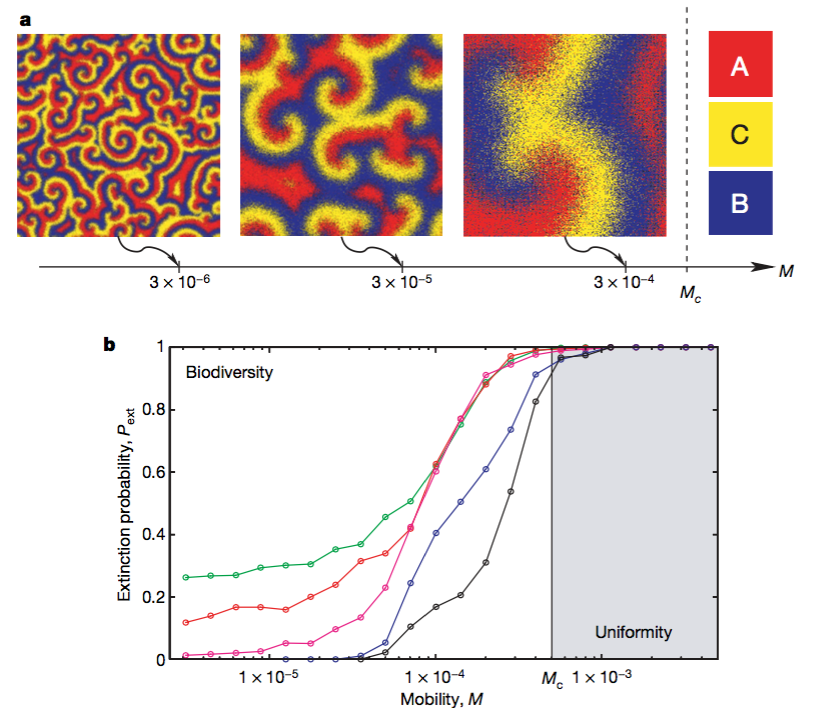Mobility promotes and destroys biodiversity in communities with intransitive competitive networks
Non-hierarchical competitive interactions between species (i.e. intransitive competitive networks) are a mechanism that is theorized to permit stable coexistence among species, thereby maintaining biodiversity in ecosystems. These types of competitive dynamics have been observed in a variety of natural systems, and empirical studies on bacteria have demonstrated that while these dynamics are observed in certain settings, they do not necessarily always promote stable coexistence among species, particularly if species are mobile. To address how mobility and spatial dynamics affect coexistence among species that compete in a non-hierarchical manner, Reichenback et al. constructed models of the dynamics of three species that exhibited population demographics (with a specific reproductive rate), movement of individuals between nearest-neighbor patches in a coupled map lattice landscape (individual movement paths described by a random-walk process, with a specific movement rate), and what the authors called ‘selection,’ or the ability of one species to outcompete and kill a competitor in a neighboring cell and switch places with it. They found that when mobility was low and interactions primarily occurred between neighboring individuals, species coexistence was maintained over long time periods. Visually, this situation would look like spiral waves of the three species moving through space and time as individuals hunted and were hunted by individuals from each of the other species (see figure). However, above a certain mobility threshold, biodiversity was lost and the system became a homogeneous landscape composed of a single species. Approaching this question from the perspective of multiple scales, the authors show that the critical mobility that allows coexistence of all three species depends not only on size of the system, but also on the reproductive rate of the species. Thus, mobility influences the stability of intransitive coexistence networks, permitting species coexistence in certain cases, but facilitating biodiversity loss and dominance by a single species in other instances.

- Reichenbach, T., Mobilia, M. & Frey, E. Mobility promotes and jeopardizes biodiversity in rock–paper–scissors games. Nature 448, 1046–1049 (2007).
